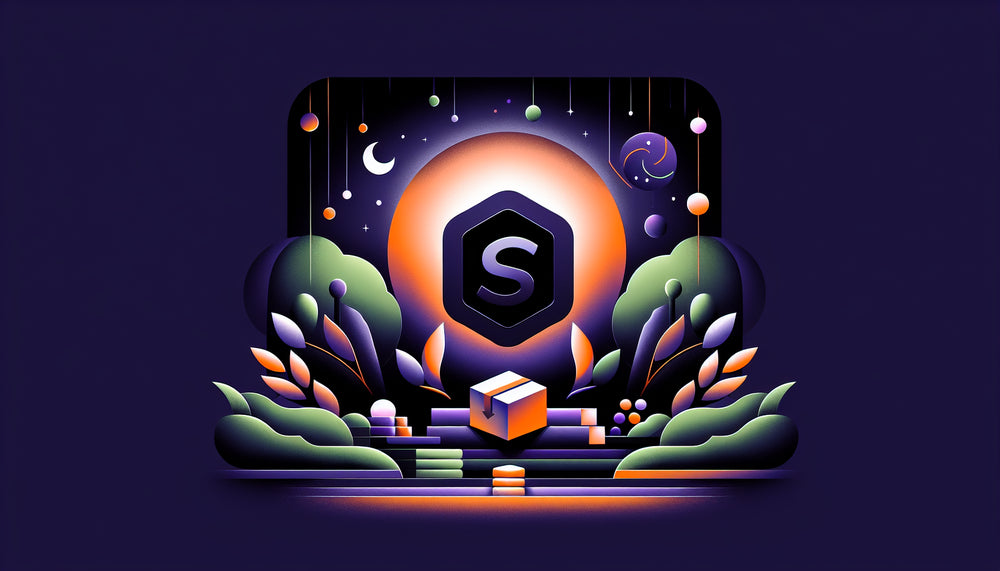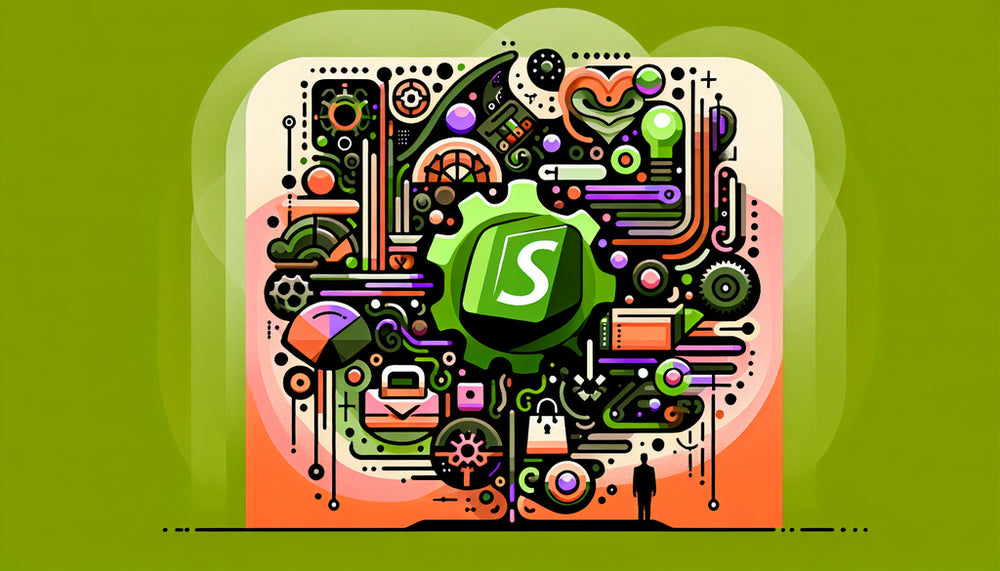Can You Custom Design a Shopify Site?

Table of Contents
- Introduction
- Why Good Design Matters
- Shopify Themes Overview
- Editing Your Shopify Theme
- Customizing Specific Sections
- Advanced Customization: Using Liquid
- Automating and Customizing Sales Features
- Custom Payment Options
- Conclusion
- FAQ
Introduction
Imagine walking into a store with a lackluster layout, unorganized shelves, and a confusing checkout process. Chances are, you would leave immediately. The same principle applies to online stores. In the bustling e-commerce landscape, having a customized and visually appealing Shopify site can significantly impact your business's success. Can you custom design a Shopify site? The short answer is yes. This blog will delve into the intricacies of custom designing a Shopify store, ensuring your site stands out from the competition while offering an exceptional user experience.
This guide will cover various customization aspects of a Shopify store, including themes, product pages, checkout processes, and more. Whether you're a beginner or an experienced developer, this comprehensive guide will equip you with the knowledge to transform your Shopify site into a unique, customer-friendly haven.
Why Good Design Matters
A good design isn't just about aesthetics; it's about functionality, usability, and creating an engaging experience for your visitors. According to studies, a well-designed site can significantly increase conversion rates and customer retention. But why is design so crucial?
Enhances User Experience
Visitors should easily navigate your site. A good design ensures that users can find what they're looking for with minimum effort. This includes intuitive navigation, fast loading times, and a seamless checkout process.
Builds Trust and Credibility
First impressions matter. A professional, visually appealing site can establish trust and credibility. Customers are more likely to purchase from a site that looks trustworthy and reliable.
Differentiates Your Brand
In a sea of e-commerce sites, a unique design can set your brand apart. Custom designs allow you to infuse your brand's personality into the site, making it memorable.
Shopify Themes Overview
Shopify offers a plethora of themes to choose from, both free and paid. These themes serve as the foundation for your store's design. However, many businesses find that pre-built themes, while convenient, often fall short of meeting all their design needs.
Pros and Cons of Pre-built Themes
Pros:
- Quick and easy to set up.
- No coding knowledge required.
- Cost-effective.
Cons:
- Limited customization options.
- May not align perfectly with your brand's vision.
- Often used by many other stores, making it hard to stand out.
Custom Themes
To overcome the limitations of pre-built themes, many businesses opt for custom themes. This involves creating a Shopify theme from scratch or significantly modifying an existing theme.
Editing Your Shopify Theme
Once you've chosen a theme, Shopify's theme editor allows you to customize it to suit your brand. This is where the magic begins.
Theme Editor
The theme editor in Shopify's admin panel lets you make real-time changes. You can preview these changes before publishing them, ensuring your site looks exactly how you envisioned.
Customizing Through Code
If the theme editor doesn't offer the flexibility you need, you can dive into the theme's code. Shopify themes are built using Liquid, a templating language that works similarly to HTML. Knowledge of HTML, CSS, and JavaScript will be beneficial here.
Customizing Specific Sections
Customizing specific sections of your Shopify site can significantly enhance the user experience and align the site more closely with your brand.
Header and Footer
The header and footer are consistent elements across all pages. Customizing these can improve navigation and highlight important information.
Homepage
The homepage is often the first interaction a customer has with your brand. Customizing the layout, including banners, featured products, and calls-to-action, can make a strong first impression.
Product Pages
Product pages are where conversions happen. Ensure they are visually appealing, informative, and easy to navigate. Customize product images, descriptions, and the layout to better showcase your products.
Collection and Other Pages
Customizing collection pages can help group similar products, making it easier for customers to find what they want. Additionally, customizing other pages like the About Us, Contact, and FAQ can provide essential information and build trust with your customers.
Advanced Customization: Using Liquid
Liquid is Shopify's templating language, allowing you to create dynamic, flexible themes. By understanding Liquid, you can make advanced customizations that go beyond the capabilities of the theme editor.
Variables and Objects
Variables and objects in Liquid allow you to display dynamic content. For example, you can use product variables to display prices, descriptions, and availability.
Tags and Filters
Tags control the logic of your templates, while filters modify the output of variables. This can include formatting dates, converting text, or even performing mathematical operations.
Automating and Customizing Sales Features
Shopify Scripts and the Script Editor provide a powerful way to automate discounts, special offers, and more.
Discount Codes and Price Adjustments
Create custom discount codes or automate price adjustments based on specific criteria, such as customer groups or purchase history.
Customizing Checkouts
Optimizing the checkout process is crucial for reducing cart abandonment. Shopify Plus users can customize the checkout.liquid file, offering complete control over the checkout experience.
Custom Payment Options
Custom payment options can enhance the customer experience by providing convenient and preferred payment methods.
Integrating Payment Gateways
Shopify supports over a hundred payment gateways. You can also customize the payment process using Shopify’s Payment SDK.
Mobile Payments
With the increasing number of mobile shoppers, optimizing your site for mobile payments is essential. Shopify’s mobile-payment options include Apple Pay, Google Pay, and Shopify Payments, ensuring a seamless experience across devices.
Conclusion
Custom designing a Shopify site may seem daunting, but the benefits far outweigh the challenges. A customized store not only sets your brand apart but also enhances the user experience, builds trust, and, ultimately, drives conversions. By mastering Shopify's customization tools and techniques, you can create a unique, compelling, and effective online store that resonates with your customers.
FAQ
Q1: Can I switch from a pre-built theme to a custom theme? Yes, Shopify allows you to switch themes easily. You can keep up to 20 themes in your theme library, making it simple to switch without losing content.
Q2: Is coding knowledge necessary for customizing a Shopify theme? Basic knowledge of HTML, CSS, and JavaScript is beneficial for deeper customization. However, the theme editor offers a user-friendly interface for many customization tasks.
Q3: What is Liquid, and why is it important? Liquid is Shopify's templating language used to create dynamic, flexible themes. Understanding Liquid allows for advanced customizations beyond the theme editor's capabilities.
Q4: Can I automate discounts and special offers on Shopify? Yes, using Shopify Scripts and the Script Editor, you can automate various discount offers and special deals tailored to different customer groups or purchase behaviors.
Q5: How do I optimize my Shopify site for mobile payments? Ensure your site is mobile-friendly and integrate mobile payment options like Apple Pay, Google Pay, and Shopify Payments to streamline the checkout process for mobile users.
Discover more customization possibilities.
Whether you’re looking to create a unique storefront, improve operations or tailor your Shopify store to better meet customer needs, you’ll find insightful information and expert tips here.

Rich Text Metafield Shopify: A Comprehensive Guide

Comprehensive Guide to Shopify Import Metafields CSV

Shopify Image Metafields: The Ultimate Guide

Efficiently Using Shopify GraphQL to Retrieve Product Metafields

Shopify How to Make a Custom Gift Card

Unlocking the Power of Shopify GraphQL Product Metafields

Shopify GraphQL: Revolutionizing E-commerce Development

Maximizing Your Shopify Store with Global Metafields

Shopify Flow Metafields: Enhancing Automation with Custom Data

Shopify Filter Products by Metafield

Shopify if Metafield Exists: A Comprehensive Guide

Shopify Filter Metafield: A Comprehensive Guide

Shopify GraphQL Update Metafield

Shopify Customize Product Page: The Ultimate Guide

Shopify Custom Page Template: A Comprehensive Guide

Shopify Draft Orders: A Comprehensive Guide

Shopify Custom Metafields: Unleashing the Power of Personalization for Your Store

Shopify Edit Product Metafields: A Comprehensive Guide

Shopify Dynamic Metafields — A Comprehensive Guide

Shopify Customer Account Fields: A Comprehensive Guide

The Comprehensive Guide to Adding a Shopify Custom Text Field

How to Shopify Customize Collection Page for a Standout Online Store

Shopify Custom Page Builder: Unleash the Power of Personalization

Shopify Contact Form Custom Fields

Shopify Custom Landing Page: Creating Effective and Engaging Landing Pages

Shopify Create Product Metafields: A Comprehensive Guide

Mastering Shopify Collections with Metaobjects

Shopify Custom Checkout Fields: Enhancing User Experience

Harnessing Shopify Collection Metafields with Liquid for Advanced Customization

Shopify Checkout Page Customization App: An In-Depth Guide

Mastering Shopify Custom Form Fields

How to Efficiently Handle Shopify CSV Import Metafields

Shopify Create Metaobject: A Comprehensive Guide

Shopify Blog Metafields: Unlocking Custom Content for Blogs

Shopify Add Metafield to All Products: A Comprehensive Guide

How to Add Metafields to Product Pages in Shopify

Shopify Add Metafields: A Comprehensive Guide

Shopify Check If Metafield Exists

Shopify Bulk Import Reviews

Mastering the Shopify Admin: Your Ultimate Guide to Managing an Online Store

Shopify Bulk Import Metaobject: A Comprehensive Guide

Shopify Bulk Import Metafields: A Comprehensive Guide

Shopify Bulk Editor: An In-Depth Guide to Streamline Your eCommerce Business

Shopify Add Fields to Customer Registration Form

Mastering Product Metafields in Shopify Liquid

How to Save Shopify Webhook: A Comprehensive Guide

Shopify Access Metafields: A Comprehensive Guide

How to Add Custom Fields to Orders in Shopify

Mastering Shopify Product Update Webhooks





